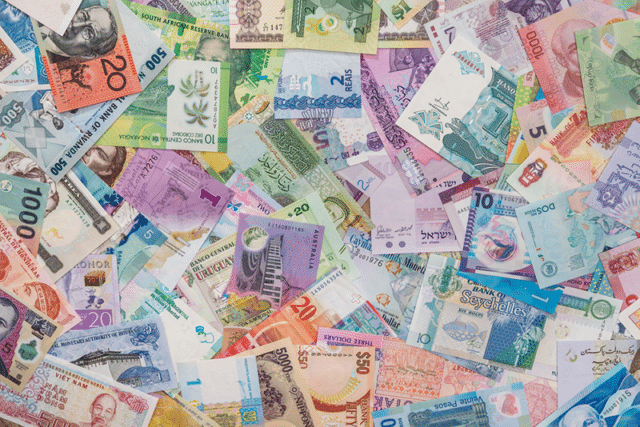What’s the first thing you think of when you hear the term ‘exotic?’ For most people, this word conjures up images of tropical beaches in amazing tourist destinations.
While not as glamorous, ‘exotic’ is anything foreign away from your typical markets in the currencies world. As we know, we classify pairs into three distinct groups; major, minor/cross, and exotic.
Interestingly, there are many more exotic pairs than major or minor pairs, most of which are virtually unheard of by the general public and not available with most brokers. Nonetheless, this article will cover the best exotic currencies to trade against the US dollar in 2022 and how to approach these instruments strategically.
What is an exotic currency?
Exotics are thinly-traded currencies from so-called developing countries or emerging economies. In forex, we classify markets as pairs.
So, technically, an exotic currency forms part of an exotic pair, an instrument consisting of this currency paired against a more dominant market like USD, EUR, GBP, etc.
Some of the common examples include EURTRY (Euro / Turkish lira), USDZAR (US Dollar / South African rand), GBPNOK (British pound / Norwegian krone), just to name a few.
Benefits of exotic currencies
Exotic markets are pretty interesting and different from their counterparts. These currencies are characterized by higher volatility, low trading volume, somewhat erratic price movements, and wider spreads.
Consequently, there’s a consensus suggesting most retail traders should shy away from these markets since they pose more considerable risks.
For the most part, it’s an understandable sentiment to have as the qualities of exotic pairs aren’t favorable for the average retail investor, particularly those who use short-term speculative strategies.
Yet, for more long-term-focused, experienced investors, these instruments can provide higher returns and diversified profiting opportunities away from the price movements of the standard forex currencies.
All traders seek the highest possible volatility as it’s the primary element responsible for the extent of your gains. Exotic markets technically have much larger volatility since their pairings consist of one stronger currency versus another less stable one.
Another unique aspect of exotic markets is their attractive interest rates. This is mainly because emerging economies have maintained contractionary monetary policies, resulting in higher rates than their more established counterparts.
Hence, exotic currencies may present favorably-yielding carry trade opportunities. A carry trade is a long-term, ‘buy and hold’ type strategy where traders seek to profit from positive swaps by trading a currency with a lower interest rate for another with a higher interest rate.
Things to consider before trading exotic currencies
It’s generally advised for short-term traders not to trade exotic markets as they have larger spreads. When using strategies through these approaches, you want lower spreads since your profit targets are smaller.
For other traders, spreads also play a role as it means your entry points are less favorable. Consequently, this results in a reduced lot size to account for the spread.
Hence, when trading exotic currencies, you may want to consider a fixed or zero spread account where you have lower spreads and a fixed commission.
Best USD-paired exotic currencies
Below is a selection of the best 3 USD-paired exotic currencies to trade.
- USDZAR
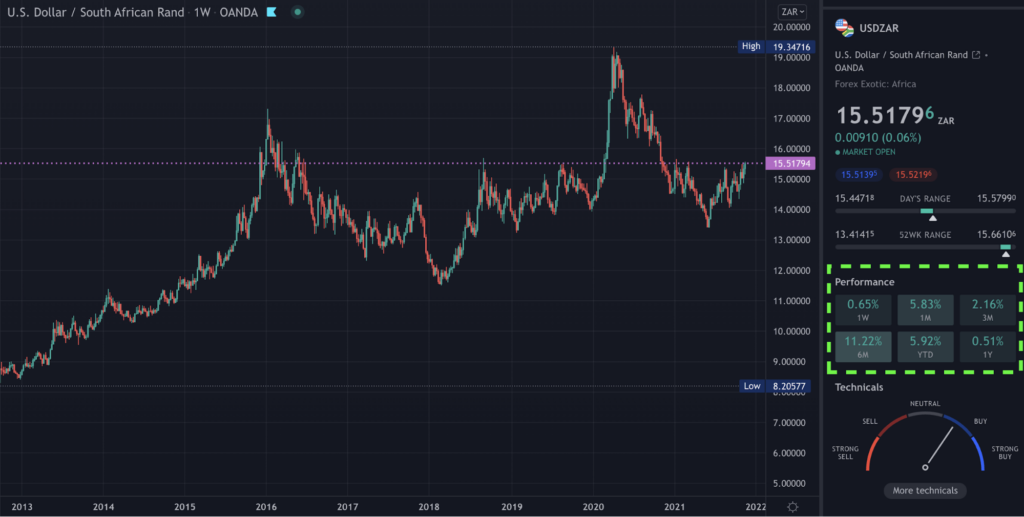
USDZAR consists of the US dollar and the South African rand. This is one of the most popular USD-based exotic pairs as the two respective countries underpinning the currencies have frequent trade relations.
The South African economy is still emerging and has technically been far inferior to the United States for decades. Hence, there is usually a bullish bias for USDZAR, as evidenced by the uptrends on the chart above.
Yet, there are some scenarios where the dollar is weaker against the rand, presenting traders with rare selling opportunities. So, USDZAR doesn’t always move in one predominant direction, meaning it’s quite flexible.
Moreover, there may be incentives for shorting this pair for a positive-yielding carry trade with the right market conditions. The South African Reserve Bank’s interest rate is 3.5%, while the Fed’s interest rate is 0.25%.
Historically, the former has had a positive differential over the latter for years. Hence, American investors would want to buy South African rands to earn better returns over their dollars.
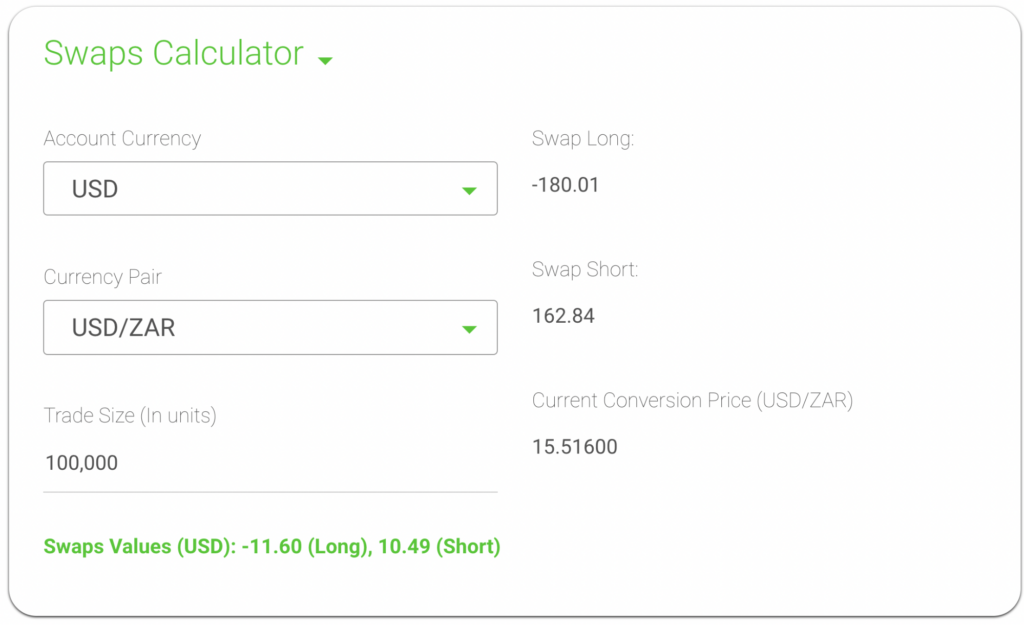
Most brokers will offer you positive swaps for selling USDZAR. For instance, with a standard lot on IC Markets presently, you can earn $10.60 daily for selling and lose $11.60 for buying this pair.
- USDCNH

This pair is quite an intriguing market as it comprises currencies from the two largest economies globally; the United States (USD) and China (CNH– Chinese yuan renminbi).
Hence, price movements in this market are never generally one-sided, as they might be with pairs like USDZAR and others. This means traders can employ various strategies to such an instrument in the short, medium, and long term.
USDCNH offers some of the lowest spreads for exotic markets generally, which is another advantage. Lastly, the People’s Bank of China’s interest rate (4.35%) is higher than the Fed’s (0.25%), presenting a selling carry trade with most brokers.
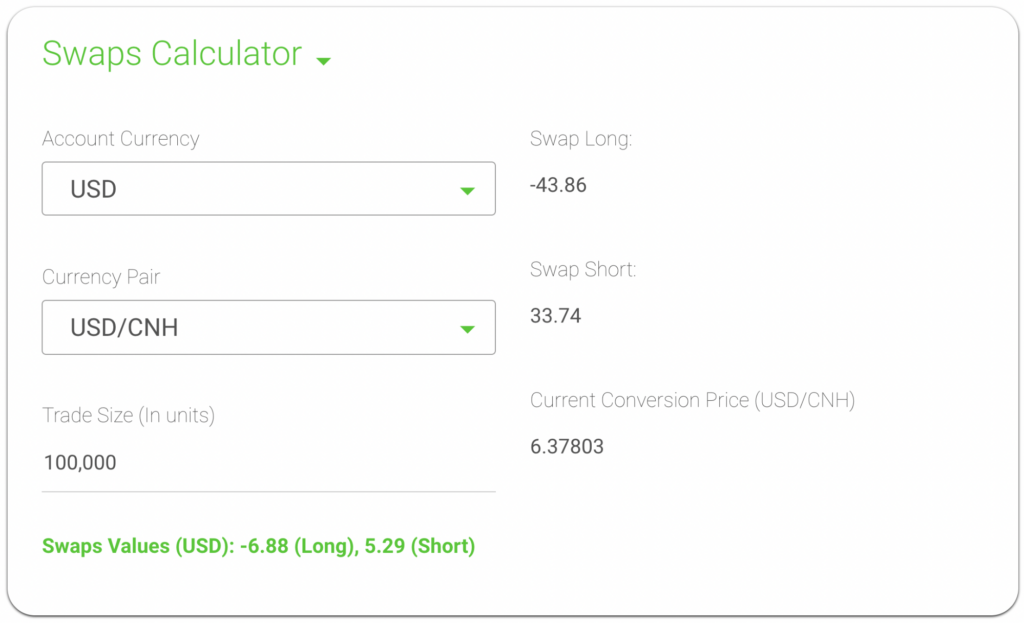
For example, you can earn $5.29 for selling (and be debited $6.88 for buying) this pair with a standard lot on IC markets.
- USDTRY
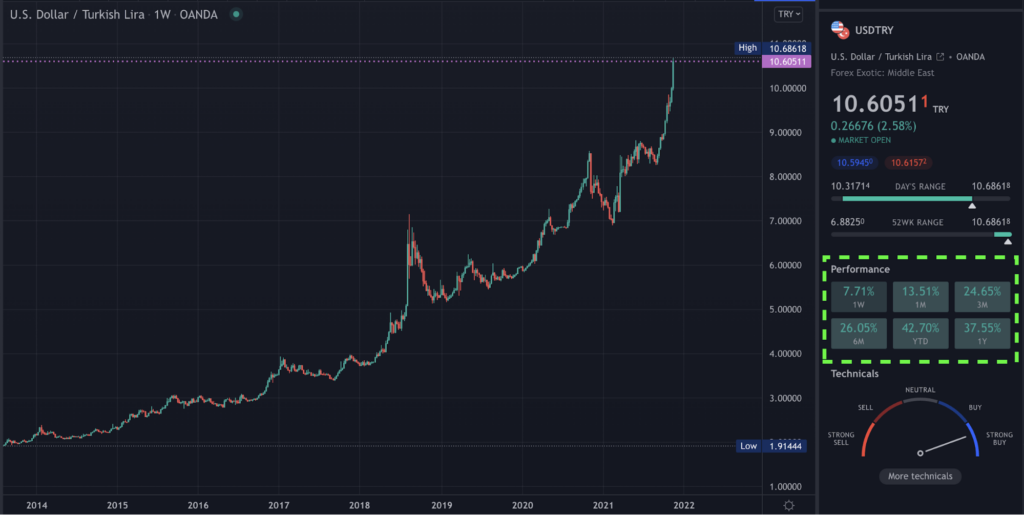
USDTRY sees the US dollar and Turkish lira pitted against each other. This pair exhibits one of the longest-running bull markets in forex. Within the past year, USD has risen 42.7% against TRY.
This dominance over the lira is due to Turkey’s increasingly unstable economy over the past few decades. The country continues facing rising inflation, political pressure, debt crises, and other massive problems contributing to a gradual weakening of its currency.
These are all challenges forex traders can exploit to make a profit. Countries with emerging currencies like the lira tend to face serious devaluation risks. Yet, this market isn’t as versatile as the rand since a more favorable bias is to find buying opportunities.
While traders can receive even more attractive positive swaps by shorting this pair, it’s probably not the best decision since the lira has fundamentally been very weak.
Final word
Overall, exotic currencies provide experienced traders with unique opportunities not highly correlated with the macroeconomics of other popular markets. Moreover, these instruments possess tremendous volatility, increasing the potential for massive gains.
Yet, like any pair, you need to be aware of the drawbacks, such as the larger spreads (due to the reduced liquidity) and the tendency for price to behave erratically.
